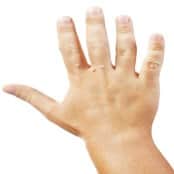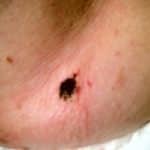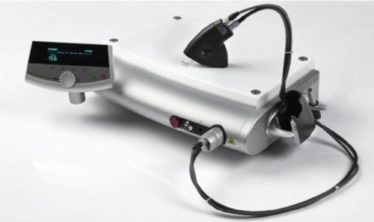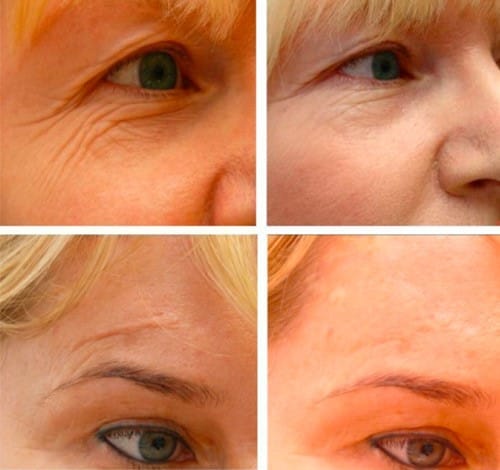Laser Wart Removal
Warts are very common, with an incidence of approximately 10% in children and young adults. An estimated 4 million patient visits were recorded in 1982 for warts. Approximately 70% of these patients were between 10 and 39 years of age, and 50% presented to a dermatologist.
Peak incidence occurs between the ages of 12 and 16 years. Warts often cause pain and may interfere with function. These complications, along with cosmetic embarrassment and the risk of spreading to other areas of the skin, are indications for treatment, which can be challenging. Effective therapy must provide a reduction in pain and improvement in the quality of life. Above all, people find warts unsightly and ugly in appearance and try many ways to remove them, often without results.
Unfortunately, the NHS does not fund the removal of common warts and verrucas anymore, and after trying over the counter preparations with little success, people are left with these viral infections they then have to live with.
At the Birmingham Wart, Verruca and Fungal clinic, under the supervision of lead cosmetic doctor Dr Sagoo, we use a variety of different methods to improve warts and verrucas, ranging from cryotherapy (using liquid nitrogen spray) to shave excision and diathermy (cutting and burning the skin lesion) to using advanced long-pulsed Nd: YAG laser wart removal treatment, which deprives the wart of a blood supply by firing shots of the laser, which often results in the wart diminishing and dropping off.
What are warts?

Warts are skin growths caused by the human papillomavirus (HPV) infection. They are contagious, spreading from one individual to another by a variety of mechanisms, ranging from direct contact to aerosol spray. They are frequently body part specific, affecting one body part (such as the hands or the feet) without spreading to other areas. Many warts seem to come and go at their own leisure. Others (such as venereal warts) are notorious for lasting a lifetime.
The primary reason for treating warts is the elimination of symptoms (including relieving cosmetic concerns) and ultimately, removal of warts. If left untreated, visible warts may eventually resolve on their own, remain unchanged, or increase in size or number over time.
What are some types of common warts?
- Dome-shaped warts: on the backs of fingers, toes, and knees.
- Mosaic warts: Tiny, so-called “seed warts” can proliferate by the dozens or hundreds all over the sole of the foot or hands.
- Flat warts: These are small, flat, flesh-coloured pimples and may be numerous on one part of the body (for example on the face, arms, or groin).
- Plantar warts are found on the bottom of the foot (the “plantar” part of the foot).
- Periungual warts are warts around or under the nail.
- Filiform warts typically appear as a single long stalk, often on the face.
- Genital warts are transmitted during sexual contact and appear around the penis, vagina or anus.





Common treatments to try to remove warts
- Salicylic-acid preparations: Salicylic acid is a keratolytic medication, which means it dissolves the protein (keratin) which makes up most of the wart itself and also the thick layer of dead skin that often tops it. This is available over the counter.
- Freezing: Cryotherapy (freezing) with liquid nitrogen or cryoprobe. Repeat applications every 1–2 weeks as necessary. Aerosol sprays or liquid nitrogen freeze warts and basically cause localized frostbite at the treatment site.
- Podophyllin: Podophyllin is a plant extract that is extremely caustic. It is used primarily for venereal warts. Podophyllin resin 10% –25% should be applied to each wart and allowed to air-dry. The preparation should be thoroughly washed off 1–4 hours after application.
- Surgical removal either by excision, shaving, curettage, or electrosurgery (heat).
- Laser wart removal: For years practitioners have used classic laser surgery to burn and destroy wart tissue. Newer advances in laser technology target the chromophore (the vascular component of the wart) shrinking down the tiny blood vessels which supply the wart and keep it alive, eventually starving the wart of blood and nutrients. This procedure is virtually painless and many times an anaesthetic is not necessary. We are proud to offer the Cutera 1064-YAG system.
Although wart removal treatments are an inexact and unpredictable science, most warts respond within 3 months of therapy. The following therapies for warts will not always remove the wart on the first try. We will continue your treatment until you are satisfied.
Treatment applications
- Cryotherapy using liquid nitrogen.
- Laser wart removal using laser long wave pulse.
- Shave excision and diathermy.

What results can I expect from Laser wart removal treatment?
The Cutera Nd: YAG laser provides new hope for the removal of a wide range of warts that are resistant to traditional therapies, without presenting a high risk of scarring. Typically, more than two-thirds of warts caused by human papillomavirus (HPV) can be cleared using the Nd: YAG laser. Areas, where the laser can be used, include fingers, fingernails, face and feet.
Are there alternatives?
Chemical agents, liquid nitrogen, and electrocautery are common therapies that may help to improve warts. Though usually effective, none work in every case. Recurrence of the wart is often a problem, and skin colour changes from the therapy are common. Carbon dioxide lasers are often used to remove warts, but this treatment method also removes much of the surrounding tissue and generally results in scarring. The Nd: YAG laser, on the other hand, targets the small blood veins that feed the wart.
Does the laser wart removal procedure hurt?
The laser energy is focused directly on the wart tissue. The majority of laser light bypasses the upper layers (“epidermis”) of the skin and concentrates on the tiny blood veins that feed the wart near the “dermis” of the skin. You may feel a slight stinging sensation during the laser wart removal treatment. Also, if needed, topical or local anaesthesia can be administered, but this is usually not necessary.
What happens after the laser wart removal treatment?
Immediately after laser exposure, the treated area will usually turn a grey colour, and then blacken. It usually falls off about 3-4 weeks afterwards. Over the next several days, the area will heal, and the skin texture and tone will return to normal.
How long does it take?
Depending on the number of warts, as well as their size and location, a typical session runs for approximately 5-10 minutes. The number of sessions required varies from case to case. Simple warts may require only one or two sessions, whilst deeper or more resistant warts may require additional sessions with the laser wart removal.
Is laser wart removal safe?
The Nd: YAG laser is safe, and can be used on children; it has been used successfully for thousands of treatments worldwide. Because only light interacts with your skin, there is no risk of a reaction from chemical agents.
Deep Palmoplantar: Before and After

Three days after treatment

After one week

After two weeks
Shave Excision and diathermy

Shave excision is a simple procedure done to remove growths such as lesions, warts, verrucas, and moles on the skin. The growth is removed with a sharp razor and soothed with antibiotic ointment to encourage healing. Sometimes an electrode is used to “feather” the edges and make the scar less noticeable.

Wart-like mole

Post excision diathermy

Two weeks later
CO2 Laser for Wart Removal

Sometimes we may use a CO2 ablative laser to vaporise the wart. On general, this laser will also seal the blood vessels to minimize bleeding with the ablative effects of the heat laser energy with exact precision. This is called laser diathermy. The clinic uses one of the most advanced CO2 lasers in the world, created by MedArt. Solihull Medical Cosmetic Clinic is one of only 2 clinics in the UK with this advanced laser, which can often comfortably remove lesions with minimal downtime and scarring.
The advanced MedArt scanner enables the user to individualise treatments by selecting pattern and density, size of the treatment area, and time (which controls the depth of penetration). The scanner distributes the energy in a uniform pattern of spots, leaving islands of untreated skin between each ablated spot. The surrounding, untouched tissue facilitates tissue healing. The penetration depth helps to promote optimal collagen stimulation for contraction and remodelling of tissue.

Before wart temple

After laser ablation
Skin tags are small flesh-coloured or brown growths that hang off the skin and look similar to warts. They are very common, harmless, and usually up to a few millimetres in size, although they can be larger. They are usually found on the neck, in the armpits, around the groin, or under the breasts. They can also grow on the eyelids or under the folds of the buttocks.
A wart is a small, rough growth, resembling a cauliflower or a solid blister. It typically occurs on the hands or feet but can also occur in other locations. Warts, otherwise known as papilloma or verruca, are caused by a viral infection, specifically by one of the many types of human papillomavirus (HPV).
An epidermal nevus is a flesh-coloured, raised or warty, often linear lesion, usually on the upper half of the body.
Such epidermal growths can often be ablated simply using our MedArt CO2 laser. The laser can be focused on such lesions, which may enable them to be removed precisely and quickly without the need for stitches or dressings.
How it works
CO2 lasers produce a haemostatic effect on the tissue, meaning that no bleeding occurs as the heat produced seals any damaged small superficial blood vessels.

Seborrhoiec keratosis on back

CO2 laser diathermy

1-week post excision
The CO2 laser can also be used for improving scars and fine lines and wrinkles.

Cryotherapy/Cryopen

Cryotherapy is considered the gold standard in treating and removing warts. The Cryopen is an advanced cryotherapy innovation that is safe, fast and effective, and a new solution for improvement of warts. Procedures typically last seconds so you can be in and out of the clinic quickly.
How does the cryopen work?
The cryopen emits a fine jet of nitrous oxide under high pressure, which allows us to work with millimetre precision. This destroys the tissue by freezing the intercellular fluid, forming ice shards and crystals which rupture the membrane, thereby destroying the cell. The precision of the instrument helps to minimise collateral damage to healthy tissue.
Are there any side effects?
Cryotherapy is a relatively low risk. There are a few side effects that may occur as a result of cryotherapy, including
- Pigmentary changes (hypo or hyperpigmentation). If this happens, skin colour will usually return to normal after a few months.
- Nerve damage, particularly in areas where nerves lie close to the surface of the skin, such as on fingers, wrist, and area behind the ear. Normal sensation will usually return after a few months.
- Hair follicle damage can occur, especially when treating sites with coarse terminal hair.
How long are cryopen treatments?
The duration of the session will depend on the surface area and the thickness of the tissue being treated. This may be from 1 sec to 30 seconds.
How safe is cryotherapy?
Cryotherapy is a relatively low-risk procedure. Cryopen delivers N2O directly to the area, and not to the healthy surrounding skin.

Is cryotherapy painful?
There will be a pain sensation, similar to a stinging nettle on the skin when the nitrous oxide reaches the bottom of the area. There might be a little residual stinging for a few minutes afterwards.
We at the Birmingham wart and fungal nail clinic are one of the few clinics to offer this latest technology.
What other skin lesions can the cryopen be used for?
The cryopen may also be used to improve the appearance of:
- Skin tags.
- Solar lentigos.
- Age spots.
- Milia.
- Cherry angioma.
- Verrucae.
To arrange your consultation, please contact us via 03300 417 494.
